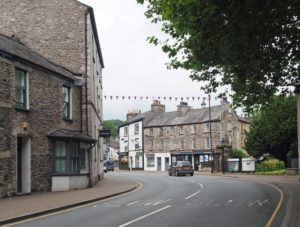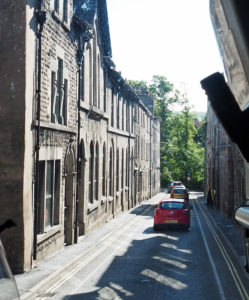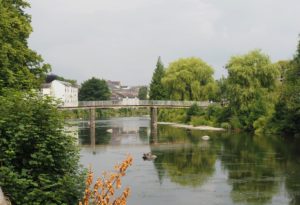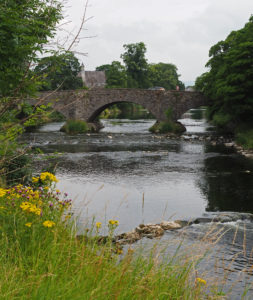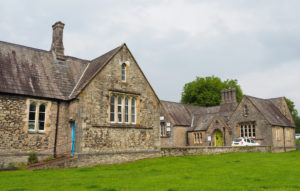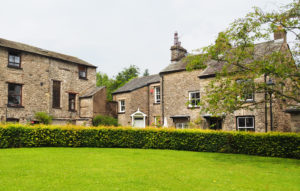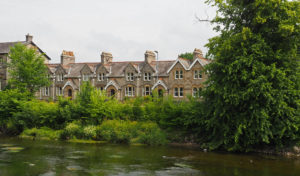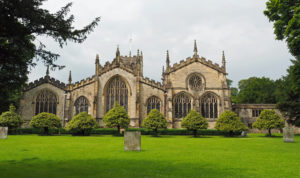Kendal is just off the M6 at the southern end of the Lake District .
Kendal’s origins date back to the C8th when the monastic settlement of Kirkland was established near a crossing point on the River Kent. A small settlement grew up round the church.
William II established a barony here to secure his Northern territories. A motte and Bailey castle was built at Castle Howe, later to be replaced by the larger stone built Kendal Castle.
Richard I granted Kendal the right to hold a market in 1189, this brought prosperity and Kendal grew rapidly, becoming the major market town for the surrounding area. Its prosperity was based on wool and Kendal was a major centre for the wool trade, which explains its Latin motto – Pannus mihi panis (‘wool is my bread’) and the teasel heads and tenter hooks on the Kendal coat-of-arms.
Many different woollen cloths were made in Kendal but the most famous was ‘Kendal Green’, a hardwearing cloth said to have been worn by the Kendal Bowmen who fought at the battles of Crecy and Poitiers. The green colour was achieved by first steeping the cloth in a yellow dye from dyer’s greenweed and overdyeing it in blue from woad or indigo. Kendal Green was later exported to America where it was worn by slaves working in the plantations. In return, Kendal received sugar and tobacco – raw materials that gave rise to making of Kendal Mint Cake and the snuff-making trade in town.
Medieval Kendal grew up around the high street, Highgate, lined on both sides by small alleyways known as yards. These were often named after the owner of the main house which stood at the top of the yard. They were full of small workshops for dyeing and weaving of wool, tanning and leather working, timber yards, small foundries as well as stables and cottages.
Kendal became a major shoe manufacturer in the the C19th when the Somerville family began making K Shoes. The factory closed in 2003 and the site is now a retail shopping village.
Now Kendal’s most famous export is Kendal Mint Cake. This has been made for over 150 years after a vat intended to make a clear glacier mint was left to boil, resulting in what we now know as mint cake. Mint cake was immortalised when it was taken by Sir Edmund Hilary on his successful attempt on Mount Everest in June 1953. Since then it has been carried as a high energy snack by hill walkers and climbers.
Kendal is a thriving and vibrant place. The out of town KVillage and the supermarkets have not affected the town centre which has a lot of small family run shops. It also has a monthly farmers market in the Market Place on the last Friday of each month.
The River Kent runs through the town and there is a pleasant footpath along the river. It is crossed by several bridges. Nether Bridge to the south of the town and was built in the C17th to replace the old ford. It has been widened twice to allow for increasing size of vehicles across it.
The town has many large and impressive buildings. The church dating from the C13th is one of the largest parish churches in England. Many of the buildings date from the C18th.
It also has a vibrant “cultural”:http://visit-kendal.co.uk/wp-content/uploads/2018/07/Kendal_Leaflets_Culture_2018_Web.pdf scene with many museums and galleries
It is small enough to be explored on foot and there are several “town trails.”:https://visit-kendal.co.uk/wp-content/uploads/2020/01/Kendal_Leaflets_Trails_2019_Web_AW.pdf town trails.
There is a lot more information and pictures “here.”:https://www.sloweurope.com/community/threads/kendal-cumbria.6010/
